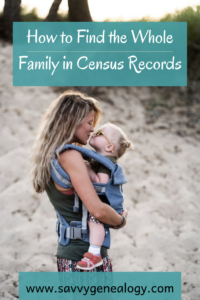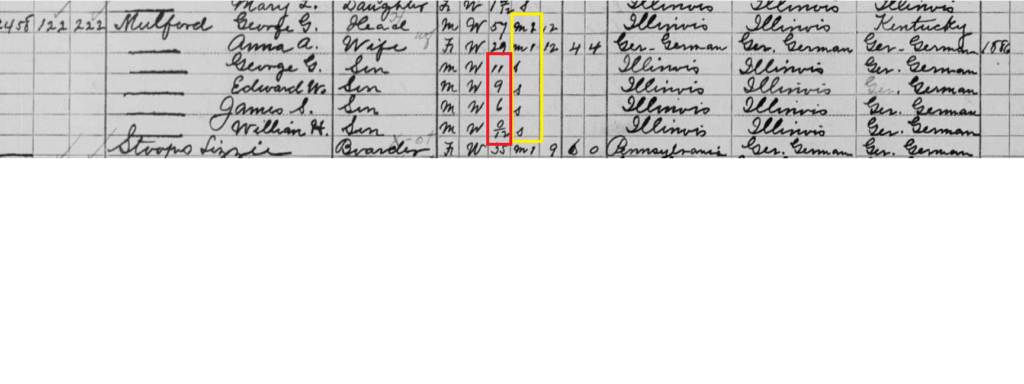How to Find the Whole Family on Census Records
You search census records for your ancestral family and you think you’ve found the whole family. Then you discover that the husband or wife had a second marriage. Or the family had another child you didn’t know about. Sometimes that happens to the best of us! So today I’m sharing some basic tips to help you on census records. These details could make your research easier if you pay attention to them.

Find the Whole Family Using Couple’s Ages
You can learn many things from census records. One of those details is the couple’s ages. This is a huge clue when you suspect they had previous marriages. For example, I was researching a family that lived in Illinois. When I looked at the couple’s ages, the husband was 46 years old and the wife was 20 years old. This tells me that the husband may have had a previous marriage because he’s only in his forties and his wife is twenty years younger than him. When I looked in the 1910 census, I found that the husband listed this marriage as his second marriage. So I now could look for another marriage for him.


Children’s Ages
People usually had children 2-3 years apart from their siblings. So if there’s a 4yr or more gap in between children, then that’s another red flag that you are missing a child for this family. You can look for birth, death, and census records that will confirm your suspicions. The 1900 census tells you how many children were born to the mother and how many survived. So if the numbers don’t match what you’ve researched, then you’re missing a child.
Relationship to the Head of Household
This one should be self explanatory. The easiest way to see if someone belonged to the family is by looking at the head of household relationship. This means the column that says wife, son, daughter, niece, in-law, etc. You will easily see if there are relatives living with your ancestral family. Then you can either add them to your family tree or confirm what the census record shares about them. This is great if the wife’s family is staying with them. Then you can learn the wife’s maiden name.
Find the Whole Family with Marital Status
Again, you probably already know this, but the marital status needs to be mentioned. You can see if the the parent is widowed or divorced or if the child is married and living with the family. You can also see if an adult child is still single. This information shapes your research. The marital status may be a small detail, but it will lead you to your next step if you’re paying attention.
Conclusion
Pay attention to the family details on census records to find more family members. These details are important for good genealogy research. So the next time you run across census records for your ancestor, look at those details a little closer. They may just lead you to your next clue. FamilySearch.org and Ancestry.com are the main sources for census records.
And as always…good luck and happy hunting!
Tiffany
P.S. Are you stuck on a certain ancestor and can’t move past them? Maybe it’s time to hire a professional genealogist that offers an outside perspective. I would be honored to take a look at your brick wall. You can learn more about how to work with me here so let’s get started breaking that wall down.
P.P.S You can learn more about census records in the articles below…
